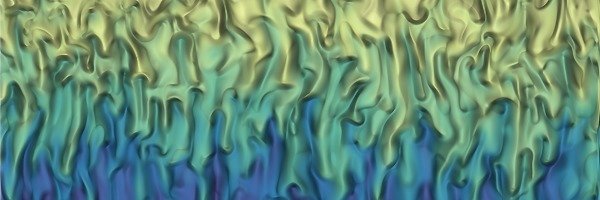
Ready for new turbulences
Two Max Planck Institutes and two research groups from the University of Twente in Enschede, Netherlands, are entering into a collaboration in a pioneering center for research into complex fluid dynamics. Their aim is to advance progress in fields such as medical diagnostics or the operation of wind turbines.
There would be no life on Earth without liquids and gases. The dynamics of fluids determine the thermal budget of the Earth or generate its magnetic field; in our bodies, our lungs and heart keep us alive. Water, gases and oils are transported in pipelines and along tubes. The combustion efficiency in a car engine, for example, or the production of chemicals in large-scale chemical reaction plants depends crucially on the dynamics of the gases and liquids. “These are but a very few examples which show: fluid dynamics governs the world and the universe. And since the mathematics of this field theory are still not understood in detail, and reactions or interactions between fluids and surfaces also throw up fundamental questions, it is definitely high time that physics really got to grips with the fundamentals of this field,” says Eberhard Bodenschatz, Director at the Max Planck Institute for Dynamics and Self-Organization in Göttingen (MPIDS). He initiated this first Dutch Max Planck Center together with Detlef Lohse, who heads the Physics of Fluids Department at the University of Twente (UT). From the UT, the physics of fluids and BIOS Lab-on-a-Chip research groups are taking on a leading role, while from the Max Planck Society, the participants are not only the MPIDS scientists, but also the Max Planck Institute for Polymer Research in Mainz (MPIP).
Synergies in infrastructure
Detlef Lohse, one of two Co-Directors of the Center, emphasizes its importance for the promotion of junior scientists: “Apart from scientific cooperation and the shared use of research infrastructure, what is particularly important to us is the promotion of highly talented junior scientists as well. There will be joint training of highly qualified doctoral students, for example. And this will have a magnetic effect on top talent.”
The Göttingen Max Planck scientist Eberhard Bodenschatz, also a Co-Director, sees the joint use of major equipment as a further key advantage. “Together, we have a globally unique infrastructure to investigate fluid physics. We can observe fluids on scales as different as they can possibly be, i.e. from individual droplets of liquid on the nanoscale through to large-scale turbulence, as occurs in nature in the atmosphere or Earth’s interior,” says Bodenschatz. The fluid researchers can investigate the turbulent flow between two concentric, rapidly rotating cylinders with the Taylor-Couette system in Twente, for example. An infrastructure established in Göttingen, called the “U-Boot” because of its shape, serves in contrast to investigate highly turbulent thermal transport between a warm base and a cold top plate. The transport properties of turbulent wind and the effect of turbulence on wind turbines are investigated with the high-pressure wind tunnel, which is also located in Göttingen.
Diverse fields of application
The new Max Planck Center also possesses a high level of expertise in the field of microfluids and nanofluids. One group of Hans-Jürgen Butt, Director at the (MPIP), investigates how the spread of fluids can be controlled by the nanostructure of a surface. The scientists want to use this research to produce biofilms or self-cleaning surfaces or prevent a material from icing-up. On the other hand, the group headed by Katharina Landfester, Director at the Mainz MPIP, takes the opposite route: It investigates how fluids with structured nanoparticles can affect fluid dynamics. This can be used to position biological materials at specific locations on surfaces, for example. The cooperation between the three partners also allows more detailed insight into biological processes with the aid of a component developed in Twente; this so-called Lab-on-a-Chip is a tiny laboratory on a circuit board which will facilitate the on-the-spot analysis of very tiny quantities of a liquid such as blood, for example, in the future.
CH/JE
Image: Detail of a high-resolution computer simulation of a highly turbulent salt solution. The fluid is driven not only by temperature gradients, but also by gradients in the salt concentration (double thermal diffusion). Credit: University of Twente